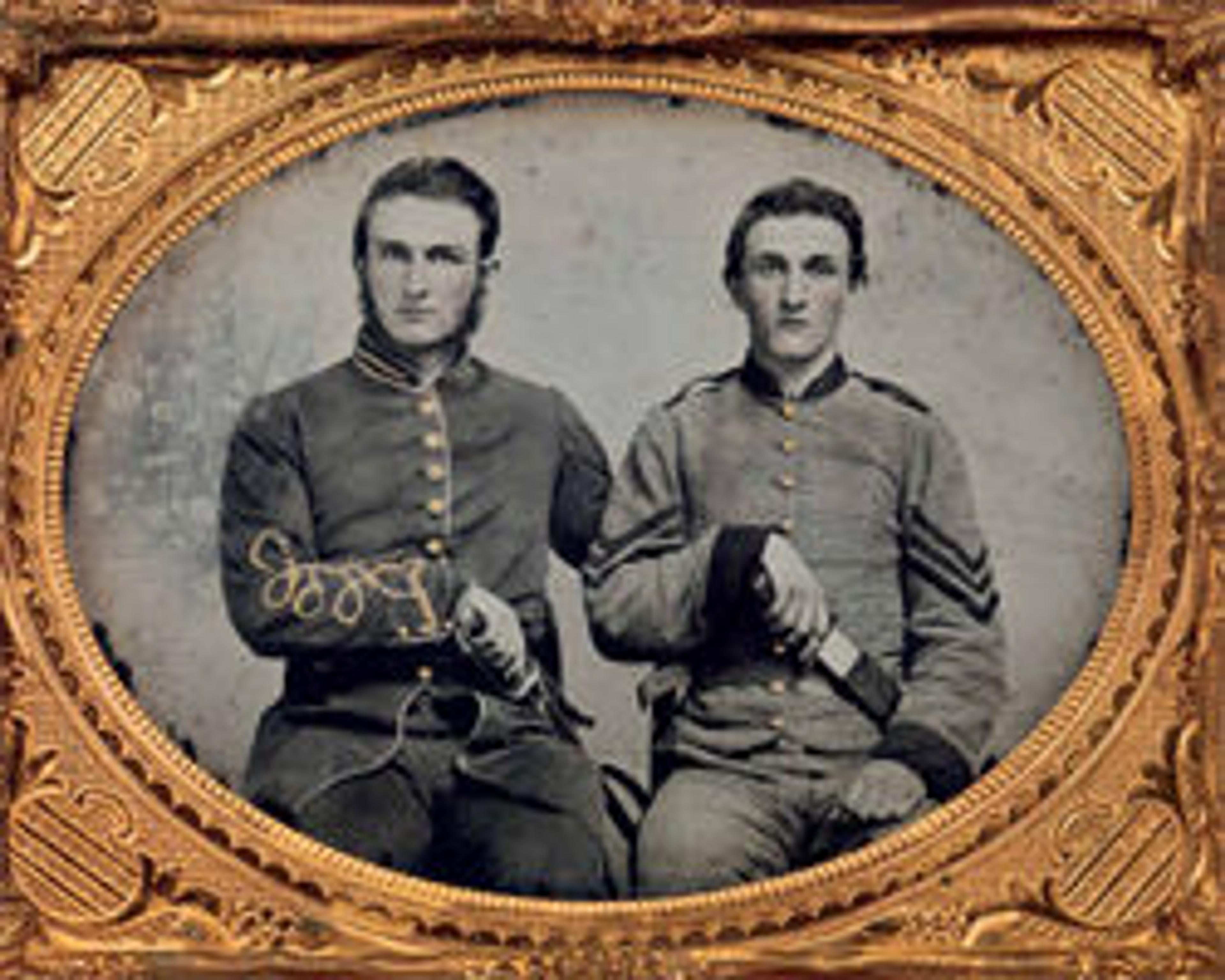Bridge on Orange and Alexandria Rail Road, as Repaired by Army Engineers under Colonel Herman Haupt
This view by Russell documents the engine Fire Fly testing the stability of a new wooden trestle bridge built quickly by the United States Military Railroad engineers to replace a masonry bridge destroyed by the Confederates. Atop the box car trailing the engine is a pair of armed sentries; others are on the rail tracks and bridge foundation. The top-hatted figure in the foreground is unidentified, but he may be the photographer himself or a civilian railroad engineer working for General Herman Haupt, commander of the United States Military Railroad. President Abraham Lincoln was so impressed with Haupt’s work that on May 28, 1862, he observed: “That man Haupt has built a bridge four hundred feet long and one hundred feet high, across Potomac Creek, on which loaded trains are passing every hour, and upon my word, gentlemen, there is nothing in it but cornstalks and beanpoles.”
Artwork Details
- Title:Bridge on Orange and Alexandria Rail Road, as Repaired by Army Engineers under Colonel Herman Haupt
- Artist:Andrew Joseph Russell (American, 1830–1902)
- Former Attribution:Formerly attributed to Mathew B. Brady (American, born Ireland, 1823?–1896 New York)
- Date:1865
- Medium:Albumen silver print from glass negative
- Classification:Photographs
- Credit Line:Harris Brisbane Dick Fund, 1933
- Object Number:33.65.278
- Curatorial Department: Photographs
More Artwork
Research Resources
The Met provides unparalleled resources for research and welcomes an international community of students and scholars. The Met's Open Access API is where creators and researchers can connect to the The Met collection. Open Access data and public domain images are available for unrestricted commercial and noncommercial use without permission or fee.
To request images under copyright and other restrictions, please use this Image Request form.
Feedback
We continue to research and examine historical and cultural context for objects in The Met collection. If you have comments or questions about this object record, please contact us using the form below. The Museum looks forward to receiving your comments.
